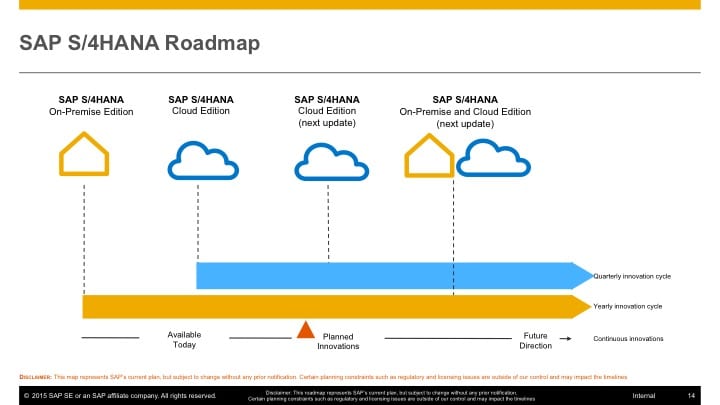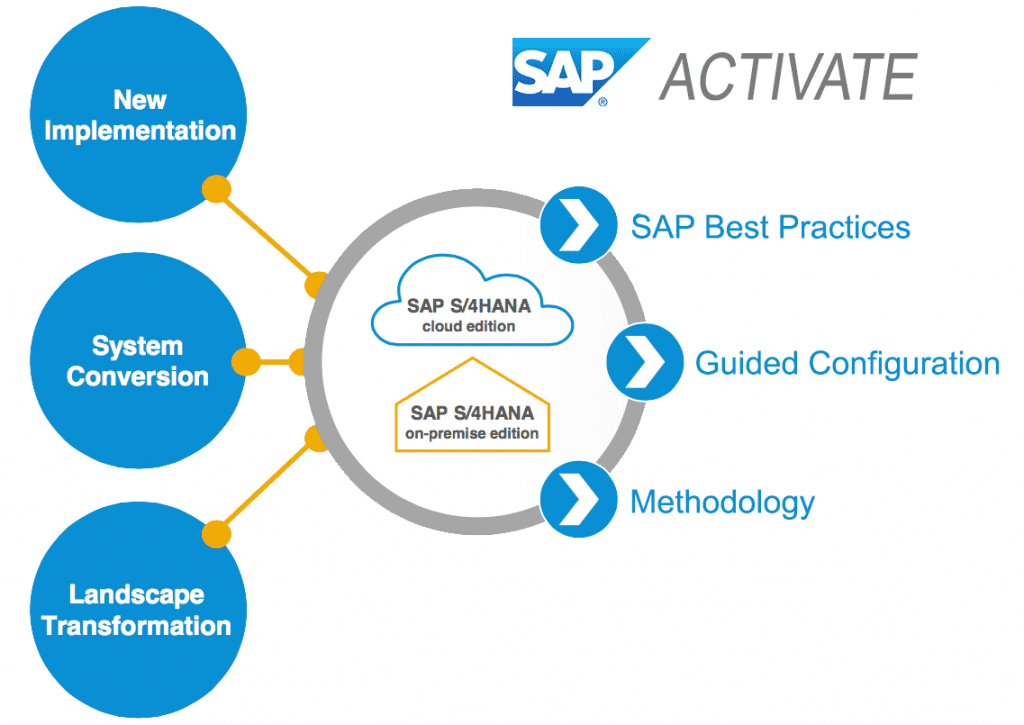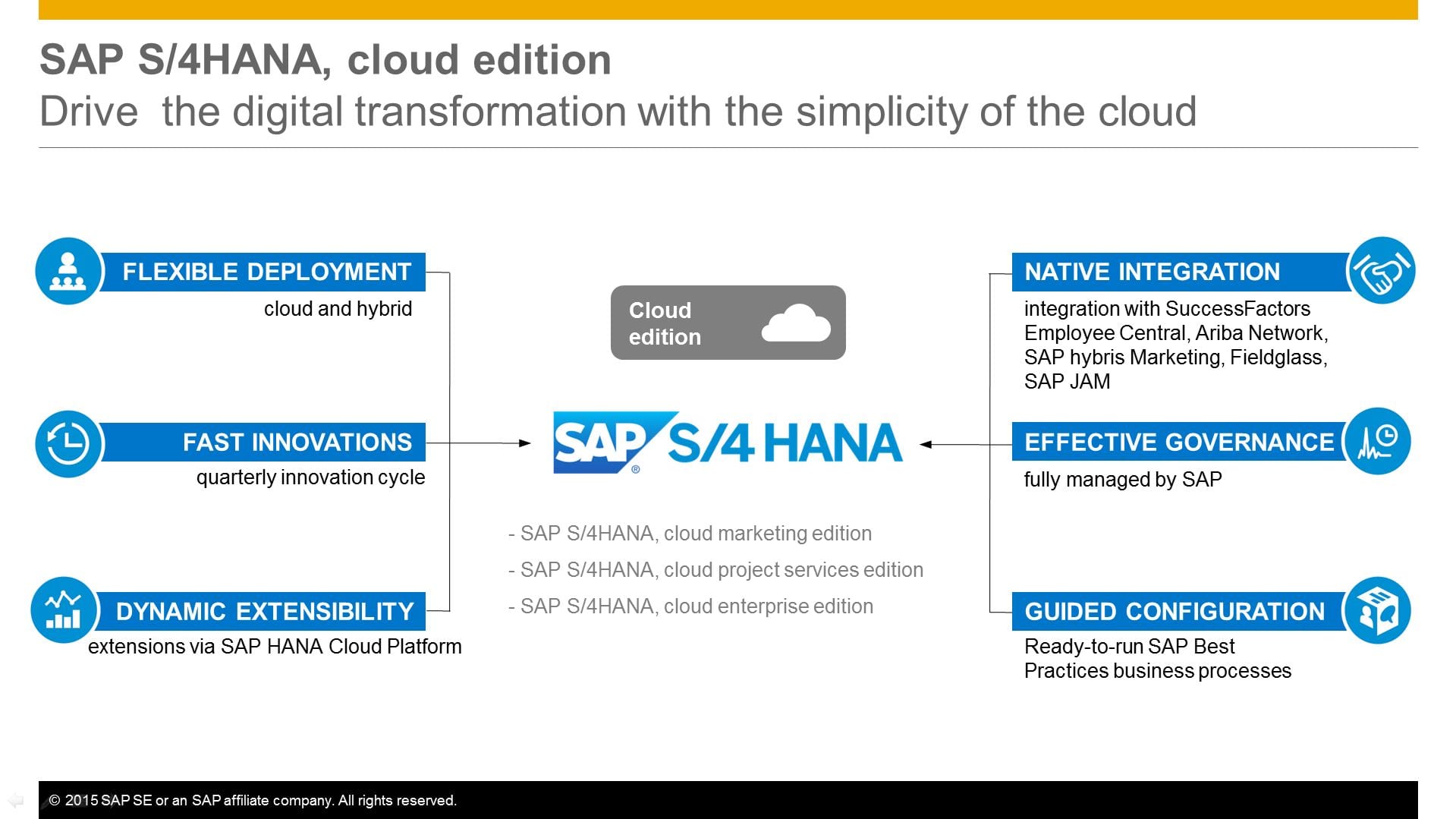SAP S/4HANA Cloud Editions or On Premise? Demystifying the Options and Cost Benefits
Switching to SAP S/4HANA cloud seems to be easy on the surface. But in reality, the choices it presents makes the decision-making process difficult.
The redesigned structure of the SAP S/4HANA cloud has certain new elements. Comprehending the technical redesigns requires tedious training sessions. These sessions eventually take-up most of the time and resources.
You can either switch to the SAP S/4HANA by sticking to the existing ERP SAP-based solutions, or be ready to bring a new implementation system. However, things do not change as in both you will need effective deployment platforms.

Image Source: https://blogs.sap.com/wp-content/uploads/2015/05/slide14_696542.jpg
Choosing one of the two options- cloud and on-premise hinges on two important factor costs and results. Understanding the difference between both mediums can help make better judgment of operating costs and the output it provides.
So, here, we will talk about the two deployment platforms- On-premise and cloud. We will try to gauge the differences between so that you can understand, which platform suits your business better.
On-Premise vs Cloud Platform
On-Premise
The on-premise platform for S4 HANA deployment is an internal platform placed in the servers. The control of this serves remains at the hand of your tech team. But when it comes to SAP upgrades, the company provides them annually. However, it’s your team that controls the tests of the upgrades.
From the above information, it is clear that the on-premise platform provides a greater degree of control. Also, it stands to the time-to-value effectiveness metric.

Image Source: https://www.tachyontech.com/wp-content/uploads/2016/09/SAP-Activate-Diagram-1024×725.png
Cloud Deployment
Unlike the on-premise deployment platform, cloud deployment is present in the SAP servers not the internal servers. Quite naturally, the host company maintains the servers and provides quarterly upgrades.
The cloud platform provides various benefits in both the private and public edition. The private edition cloud platform does a bit more than providing the existing range of S/4 HANA functionality. It also provides a geographical extension.
On the other hand, the public platform comes in handy while dealing with the LOB challenges. It has a favorable effect on the overall working and the strategy of the ERP solution.
Difference between cloud and on-premise in the tabular form
| Areas of differences | On-premise | Cloud |
| Licensing methods | Based on traditional licensing approaches. | Subscription mode of licensing. |
| Maintenance and testing | The internal location of the servers makes it the responsibility of the in-house tech staff of the user company to comply with the maintenance and testing. | The SAP servers hosted by the parent company are responsible for the systematic changes to be put into effect.
|
| Control | The user has the entire control of planning over the PTC-Planning, testing, and Changing the systems in use.
| The control over the PTS lies in the hands of the parent company. Though, the upgrades initiated by the SAP company also brings in users for a collaborative act. |
| Scope for customization | The on-premise platform provides a greater degree of scope for customization. | The scope of customization is limited in the cloud platform mainly due to the predetermined industry-standard configuration that it comes with. |
| Functional outreach | On-premise encapsulates entire ERP functionality along with paving the way for the SAP hybris inclusion. | It has the following key functionality aspects; ● Integration with the SAP Success Factors Employee central; ● SAP FIeldglass; ● SAP Hybris marketing; ● Standard ERP functionality. |
The cost factor
On-Premise
As mentioned in the on-premise deployment platform comes with traditional licensing. This translates to payments for the initial purchase and annual maintenance. However, the cost of the updates is on the higher side, so the cost of maintenance is relatively low.
Cloud Platform
The licensing model of cloud platform hinges on monthly payment. This payment accounts for the system’s updated and infrastructural changes. The best part about the cloud platform is that you don’t have to separately invest a huge sum employing IT staff.

Image Source: https://www.zarantech.com/blog/wp-content/uploads/2017/11/SAP-S4HANA-Cloud-Edition-overview.jpg
Conclusion
There is no denying the fact that an apt deployment platform of SAP S/4HANA cloud can bring in a palate of benefits to the table. But the users must have done the due diligence before making a choice. They must know the pros and cons of both mediums.
A well-informed user can make the right choice adhering to the cost and usability factor. After all, the choice mainly depends on the services that you need and the cost that you can incur.









